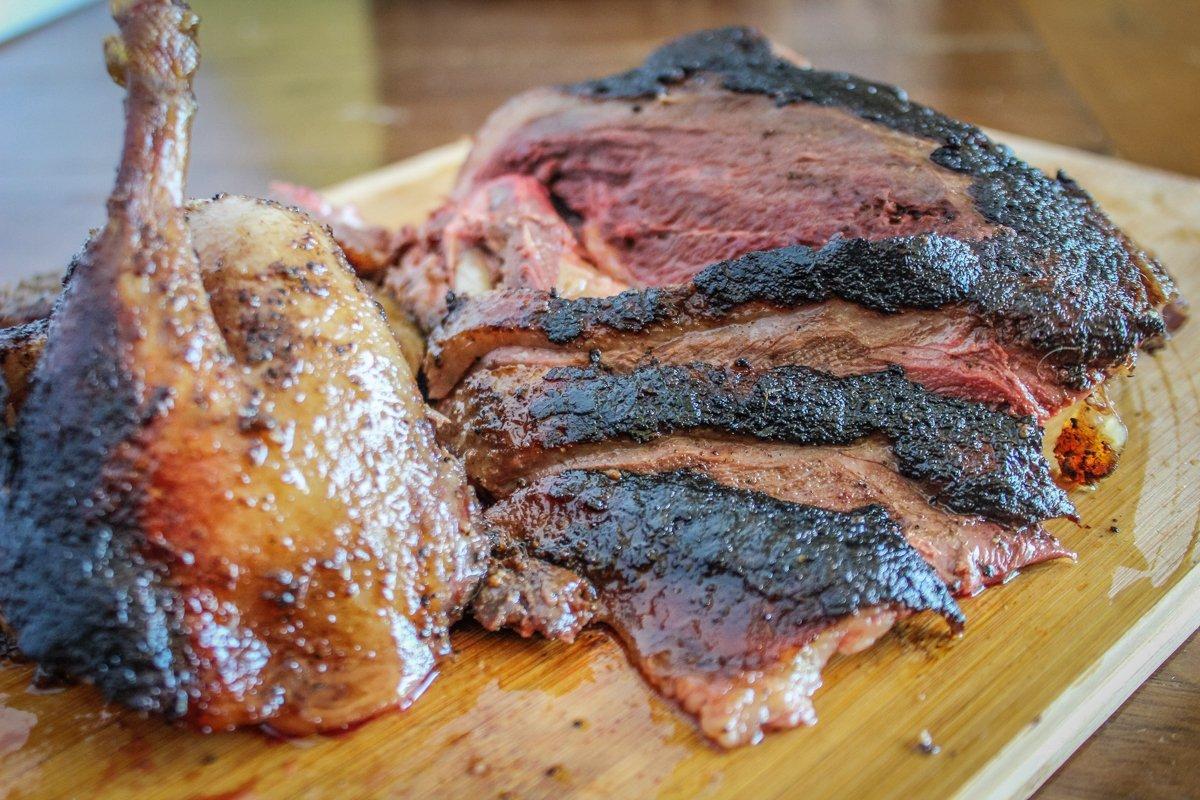A fantastically easy way to cook a whole duck and have it turn out perfectly every time.
Sous Vide Orange-Ginger Mallard Pan Seared in Duck-Fat Recipe
20 Min
Prep Time
190 Min
Cook Time
2-4
Servings
Medium
Difficulty
If you have watched a cooking show in the past year or two, you have probably seen someone use the sous vide cooking method. Sous vide cookers work by circulating water over food sealed in a vacuum sealer bag.
The only drawback to the method is that the outer surface of the meat doesn't get seared. To fix it, you can sear it for a minute or two per side on a hot grill or in an iron skillet. Since everything is better with duck fat, we seared the skin on this one in a cast-iron skillet in a bit of duck fat. Since the meat is already cooked through, it only takes a couple of minutes to crisp the skin.
We used an orange-ginger pepper seasoning and a bit of hoisin sauce to season this one. The combination gives a bit of sweet and salt along with some nice citrus.
Ingredients
1 whole duck, skin on, backbone removed, spatchcocked
2 tablespoons Chef of the Future Orange Ginger Pepper seasoning
2 tablespoons hoisin sauce
8-10 sprigs of fresh chives
Cooking Instructions
Using a sharp pair of kitchen shears, snip up both sides of the backbone and pull it free. Save it for duck stock. Flip the duck over and fold it flat, skin side up. Sprinkle both sides liberally with the Chef of the Future Orange Ginger Pepper seasoning, it is rapidly becoming my go-to for waterfowl.
We used the new Magic Chef Realtree vacuum sealer (available soon at Home Depot) to seal up the duck. It starts working the instant you slide the bag into the slot, saving a few steps over most sealers.
When the duck was sealed, we dropped it in a pot of water with the sous vide cooker set on 135 degrees. For a duck that was about 2 inches thick at the breast, we let it cook for three hours. The beauty of sous vide cooking is that the meat comes to temperature gradually, cooking to the same doneness all the way through without drying out.
Once the duck is cooked through, remove it from the bag, remove the chives, and pat the skin dry.
Heat two or three tablespoons of duck fat in a cast-iron skillet over medium-high heat. When tiny wisps of smoke begin to rise from the fat, drop the duck in, skin side down. Let it sizzle for two to three minutes to crisp the skin. Flip the duck and sear the underside.
Let the duck rest for five to 10 minutes before slicing the breast and separating the wings, thighs, and legs.











